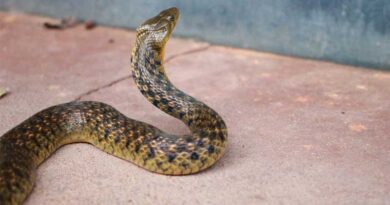
Pest and Disease Management in Soybean for High Yield (Kharif 2025): Recommended Agrochemicals
28 July 2025, New Delhi: Soybean is one of the most important Kharif crops in India, contributing significantly to the oilseed economy and livelihoods of millions of farmers. However, in the Kharif season, soybean is highly vulnerable to pest and disease infestations due to prolonged humidity, fluctuating rainfall, and dense foliage conditions. Timely identification and crop-protection interventions are crucial for preventing yield losses.
To help farmers manage these challenges, the ICAR – National Soybean Research Institute, Indore, India has released updated pest and disease management guidelines for Kharif 2025. These include clear recommendations for early-stage scouting, scientific diagnosis, and appropriate agrochemical applications.
Disease Management in Soybean
1. Rhizoctonia Aerial Blight
This disease causes wilting, browning, and drying of the upper parts of the plant. If not controlled early, it can spread rapidly across the field.
Recommended Fungicides (Apply upon symptom appearance):
- Fluxapyroxad 167 g/l + Pyraclostrobin 333 g/l SC @ 300 g/ha
- Pyraclostrobin 133 g/l + Epoxiconazole 50 g/l SE @ 750 ml/ha
- Pyraclostrobin 20% WG @ 375–500 g/ha
These fungicides effectively control the pathogen when applied promptly after symptom detection.
2. Anthracnose
Anthracnose leads to stem lesions, leaf spots, and premature pod fall. It typically intensifies during periods of high humidity and rainfall.
Recommended Fungicides (Apply during early symptoms):
- Tebuconazole 25.9% EC @ 625 ml/ha
- Tebuconazole 38.39% SC @ 625 ml/ha
- Tebuconazole 10% + Sulphur 65% WG @ 1.25 kg/ha
- Carbendazim 12% + Mancozeb 63% WP @ 1.25 kg/ha
These sprays should be followed up with field monitoring and possibly a second round of treatment after 10–15 days if conditions persist.
3. Yellow Mosaic Virus (YMV) and Soybean Mosaic Virus (SMV)
These viral diseases are spread primarily by insect vectors such as whitefly and aphids. Symptoms include yellowing, mottling, and stunted plant growth.
Management Strategy:
- Uproot and destroy affected plants at the initial stage.
- Use sticky yellow traps to monitor and control whitefly populations.
Recommended Insecticides for Vector Control:
- Thiamethoxam + Lambda-cyhalothrin @ 125 ml/ha
- Betacyfluthrin + Imidacloprid @ 350 ml/ha
- Acetamiprid 25% + Bifenthrin 25% WG @ 250 g/ha
These insecticides reduce the spread by controlling vector populations and also help in managing stem fly simultaneously.
Insect Pest Management in Soybean
1. Girdle Beetle (Chakra Bhring)
This stem-boring pest damages vascular tissues, leading to sudden wilting. Early detection is crucial.
Recommended Actions:
- Remove and destroy infested plant parts immediately.
Recommended Insecticides:
- Thiacloprid 21.7% SC @ 750 ml/ha
- Tetraniliprole 18.18% SC @ 250–300 ml/ha
- Chlorantraniliprole 18.5% SC @ 150 ml/ha
- Emamectin benzoate 01.90% EC @ 425 ml/ha
- Profenophos 50% EC @ 1 l/ha
2. Bihar Hairy Caterpillar
These caterpillars often appear in clusters and rapidly defoliate crops. Early-stage mechanical removal can be effective.
Recommended Insecticides:
- Flubendiamide 20% WG @ 250–300 g/ha
- Flubendiamide 39.35% SC @ 150 ml/ha
- Lambda-cyhalothrin 4.90% CS @ 300 ml/ha
- Indoxacarb 15.8% EC @ 333 ml/ha
3. Semilooper (Leaf-Eating Caterpillar)
Semiloopers feed on soybean foliage and reduce photosynthetic capacity.
Recommended Insecticides:
- Chlorantraniliprole 18.5% SC @ 150 ml/ha
- Emamectin benzoate 01.90% EC @ 425 ml/ha
- Flubendiamide 20% WG @ 250–300 g/ha
- Flubendiamide 39.35% SC @ 150 ml/ha
- Indoxacarb 15.8% EC @ 333 ml/ha
- Lambda-cyhalothrin 4.90% CS @ 300 ml/ha
- Profenophos 50% EC @ 1 l/ha
- Novaluron + Indoxacarb 4.50% SC @ 825–875 ml/ha
- Chlorantraniliprole 9.30% + Lambda-cyhalothrin 4.60% ZC @ 200 ml/ha
- Broflanilide 300 g/l SC @ 42–62 g/ha
4. Tobacco Caterpillar (Spodoptera litura)
A common late-stage pest that can cause mass defoliation.
Recommended Insecticides:
- Spinetoram 11.7% SC @ 450 ml/ha
- Chlorantraniliprole 18.5% SC @ 150 ml/ha
- Emamectin benzoate 01.90% EC @ 425 ml/ha
- Flubendiamide 20% WG @ 250–300 g/ha
- Flubendiamide 39.35% SC @ 150 ml/ha
- Indoxacarb 15.8% EC @ 333 ml/ha
- Novaluron + Indoxacarb 4.50% SC @ 825–875 ml/ha
- Broflanilide 300 g/l SC @ 42–62 g/ha
5. Combined Infestation of Defoliators (Semilooper, Tobacco, and Heliothis)
When more than one foliar pest is present, use broad-spectrum or combination insecticides.
Recommended Insecticides:
- Spinetoram 11.7% SC @ 450 ml/ha
- Chlorantraniliprole 18.5% SC @ 150 ml/ha
- Chlorantraniliprole 9.30% + Lambda-cyhalothrin 4.60% ZC @ 200 ml/ha
6. Combined Infestation of Defoliators + Sucking Pests + Stem Borers
In such complex scenarios, pre-mix formulations offer wide-ranging control.
Recommended Insecticides:
- Thiamethoxam 12.6% + Lambda-cyhalothrin 9.5% ZC @ 125 ml/ha
- Betacyfluthrin + Imidacloprid @ 350 ml/ha
- Chlorantraniliprole 9.30% + Lambda-cyhalothrin 4.60% ZC @ 200 ml/ha
- Indoxacarb 15.8% EC @ 333 ml/ha
Best Practices for Application
- Use clean water and calibrated sprayers.
- Always follow label instructions and avoid overdose.
- Ensure uniform spray coverage, especially on the undersides of leaves.
- Use sticker agents where necessary.
- Spray during early morning or late afternoon to avoid evaporation and maximize effectiveness.
Effective pest and disease control in soybean demands vigilance, timely scouting, and precise agrochemical application. By adopting the recommendations from the ICAR – National Soybean Research Institute, Indore, India, farmers can minimize crop losses and secure high yields during the Kharif 2025 season. As pest complexes become more severe due to climate and cropping pattern shifts, integrated and responsive management is the key to sustainable soybean production.
📢 If You’re in Agriculture, Make Sure the Right People Hear Your Story.
From product launches to strategic announcements, Global Agriculture offers unmatched visibility across international agri-business markets. Connect with us at pr@global-agriculture.com to explore editorial and advertising opportunities that reach the right audience, worldwide.






